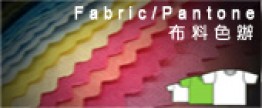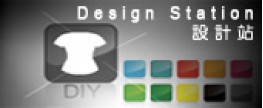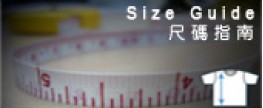1) How to pack and deliver the finished products?
2) What should do if problems found after delivery?
3) Any surcharge if finished products are delivered to overseas?
4) Can the bulk be delivered to the shipping warehouse ?
5) Why will there be a color difference between the actual production and the sample?
6) Will there be size deviations in actual garment produced when compare to the marker?
7) Shrinkage problems regarding the finished garments?
8) Things that need to pay attention when doing garment washing?
9) Additional information?
Q: 1) How to pack and deliver the finished products?
A: Each uniform is packed into a transparent plastic bag. If clients take the products in iGift, a large white plastic bag will be used to pack all the uniforms. If the products have to be delivered (~HKD150-250 delivery charge, depends on location), clients can contact iGift to make arrangement and inquire the delivery charge. If the products need to pack in cartoon box, surcharge maybe included.
Q: 2) What should do if problems found after delivery?
A: If clients pick the finished products in iGift office, they should check if the quantity and the design meet the order requirements. They should let our staff know if any problems found, so they can follow accordingly. No dispute is allowed on the quantity after delivery. If quality problems found, clients should bring the invoice and actual sample to iGift office within 3-5 days for further handling.
Q: 3) Any surcharge if finished products are delivered to overseas?
A: iGift can provide customs document and arrange to send out the products directly from
our office. Or deliver to the appointed shipping company and then they arrange to send the products to overseas. All the surcharges have to be bear by the clients, such as, customs documentation fee, transportation cost, warehouse fee, insurance, tax, etc.
Q: 4) Can the bulk be delivered to the shipping warehouse ?
A: Delivery charge:
Yes, we can do so. If customers request to deliver goods to specific warehouse or port facilities which will post certain handling charge, the transportation charges to be quote by iGift will be different from normal delivery to customer's local offices or assigned locations. Therefore, transportation charge will be quoted base on specific requests.
Q: 5) Why will there be a color difference between the actual production and the sample?
A: a) Color difference
Color difference of 5-8% is caused by dyeing. Even if we apply the same dyeing formula and conditions each time, there are still dyelot chromatism (color deviation from different dying lots). It is because there are uncontrollable dyeing factors like water quality, fabric quality, color absorptions. Normally, color deviation between different dyeing lots may vary with 5%, but the color tone running to which directions maybe hard to control. Also, such color deviations have to be checked in specific light source under light box.
b) There will be a color difference between the fabric and the other garment materials (e.g. zipper, ribbon etc.) which is normally within 8%. Different dyeing recipes, dyeing temperature and dyeing time should be applied on different materials in order to achieve the same color. Dyelot chromatism (color deviation from different dying lots) will also happen on other materials causing a color difference with the fabric color. Difference textile materials and direction of tills in different garment parts and owing to difference light reflection, a visual color difference may be resulted. As in some jackets like zip-up, windbreaker, hoodies, etc. they are made with different garment materials, problems in color matching may appeared.
c) Personal perception towards color may also affect one’s determination of color.
Q: 6) Will there be size deviations in actual garment produced when compare to the marker?
A: Yes, usually will be within +/-0.5” to +/-1.0”. Many hand-made procedures are involved in textile (uniform, apparel) production process, thus we cannot compare textiles products with those products with high accuracy (e.g. digital products, the quality mostly will be regarded as good if it is functional). Customer has to understand such size deviation must exist during the production process.
Q: 7) Shrinkage problems regarding the finished garments?
A: Shrinkage problem may happen depending on the nature of fabric and fabric construction. Shrinkage can be found most obviously on 100% cotton (approximately 8-10%) fabric. Loosely constructed fabric is commonly used to make polo-shirt will also have bigger shrinkage after washing. Larger shrinkage can be found on ribs, waffle and interlock fabric etc. as well.
Q: 8) What should we pay attention in garment printing and what are the production errors?
A: 1.As images are drawn and colored by computers, color previewed on different computers may vary due to different color contrast in different display devices. Thus, computer screens cannot be used as a standard of color.
2. There is a 5-8% error between computer design graph and finished garment (including color and thickness of the print paste). This is a limitation of screen printing technology.
n) Screen printed color is matched according the color sample like Pantone. When transferred on different materials which have different reflection rate, we will perceive as a color difference. Thus creating color difference.
o) The result of screen printing may be limited by the degree of details, print paste and environmental factor like humidity and weather. What is more, there is diffusion of print paste on the fabric when it is still wet. Thus creating a color difference from the original design.
p) Screen printing shade fading effect is obtained by adding film of different density on the frame. This type of shade fading effect is rather rough. The similarity with the original design is just around 70%.
q) Embroidery incurs movement of machine needles into the fabric. As the machine needles and the color threads have certain thickness, details of image cannot be compared with computer. The smaller the design, the more complicated will be the process, the worse will be the result.
r) As during embroidery the whole pattern is sewn continuously by color threads, long thread in between words or parts of image needed to be clear, this may create some extruding threads. For shorter threads connecting different patterns, as they are not obvious to be seen, they will not be cut usually.
s) If the embroidery pattern is too large and the central area are relatively dense. Winkle will be formed on edges and the resulting pattern will appear to be thicker. Customer should consider the effect of the out coming products before they place an order.
t) Offset printing uses four colors printing thus patterns created by this method are usually colored. The actual color of the product is different from what is displayed on the computer screen. Due to the variation in color contrast on different computer screen. Thus, there will be a color difference from the pantone color, which is around 8%. Besides, colorfastness is rather bad. Washing durability is around 10-20 times if cold water is used for washing with the garment turned inside out.
u) As Gold foil print and silver foil print is just made by ironing the gold foil and silver foil on fabrics, the fastness is relatively poor. It is suggested clothes should be turned inside out and washed with cold water. The washing durability is 5-10 times. The print will peel and turn dull afterwards.
v) Washing durability of digital print garment is around 1-2 times.
w) Washing is a random rotating process thus the effect resulted in each washing will be different. There may be peeling and some cracks form on the print after washing.
x) Color preference is just personal perception and would affect judgment towards colors.
y) Errors exist from pattern design to finishing of textiles product. The following are some common errors that may exist.
z) Errors exist from sampling to mass production as garment production (no matter in printing, sewing, etc.) involves limitations in material usage and mass human power. 5-8% error exits between sample and the final products.
Q: 8) Things that need to pay attention when doing garment washing?
A: Attentions:
1. Our company allows customers to have garment testing with our product though ITS, SGS, etc. but customer should tell us before placing their order with a listed testing details and standard requirement. We do not accept any testing requirement once after their order has been confirmed.
2. Customer are advised to washing our product according to our washing label. We do not accept any returns regarding quality problem happened due the improper washing.
3. For any industrial washing requirement, customer should notice our company before placing an order, as industrial washing may cause more serious wear and tear. Please inform us the details regarding the requirement of industrial washing.
1. Dry clean/ Normal wash
2. Washing temperature
3. Detergent
4. Bleaching Agent
5. Drying method
6. Drying temperature
4. Garment quality will be affected by storage time and climate. It is suggested that the garment should be store in room temperature (below 25℃) with low relative humidity and the storage time should be less than 30 days. If the storage time exceed the above mention period and condition, we are not responsible for any lost and compensation. If the storage time exceed 30 days before usage and 30 days after receiving the product, customers are required to inform us before placing an order. It is because fabric selection is limited by long storage condition and special packaging are required.
A: Color fading problems (including prints and fabrics)
1. Owing to some physical limitation of garment, there may be color change in various degrees after a period of storage time depending on storage condition like temperature and moisture.
2. There may be different level of color change and depreciation after washing. The level of depreciation depends on wearer care to garments. Careful handling according to the care label can enhance the service life of an garment.
3. If you have any special washing requirement, please inform our company, we are not responsible for any effects on the overall performance and durability.
4. All textile product are subjected to physical limitation, thus error may appear in the production process.
5. If you have any problem regarding the finished products, please inform us as soon as possible for follow up within 7 days after receiving your product. Any request after the valid date will not be accepted.
6. Product returned should be brand new. No product would be accept after wash and wear.




